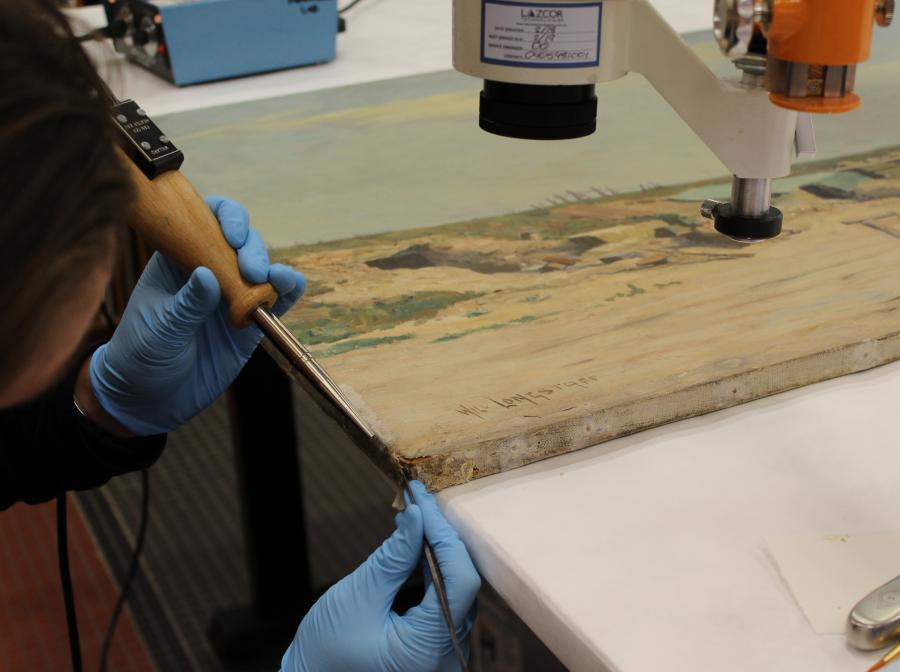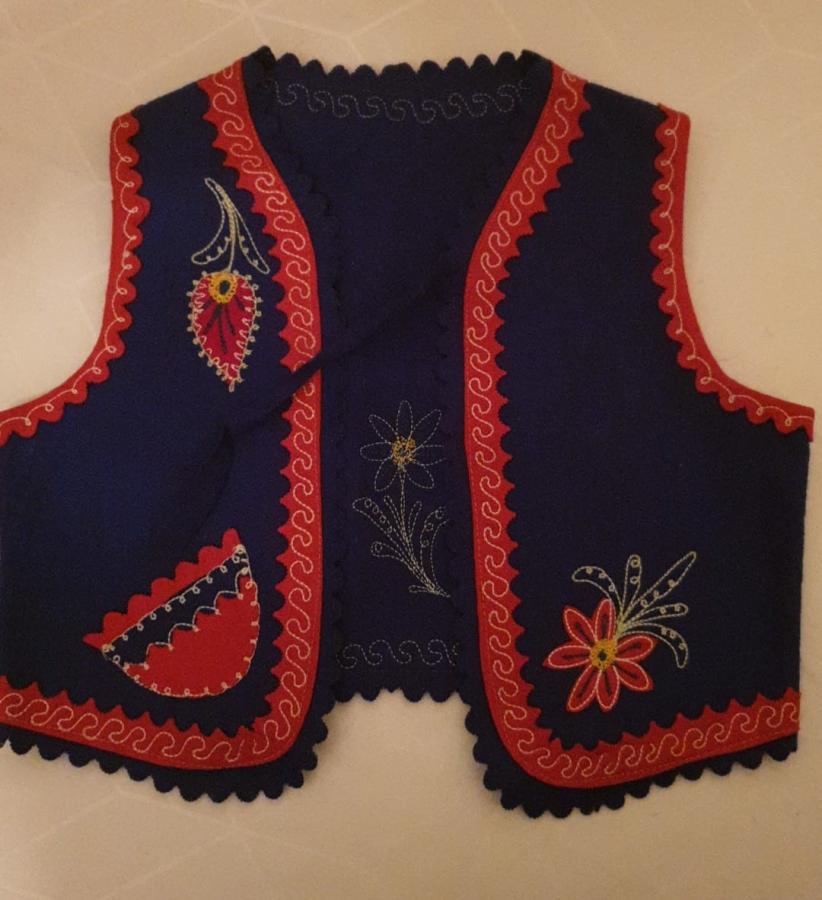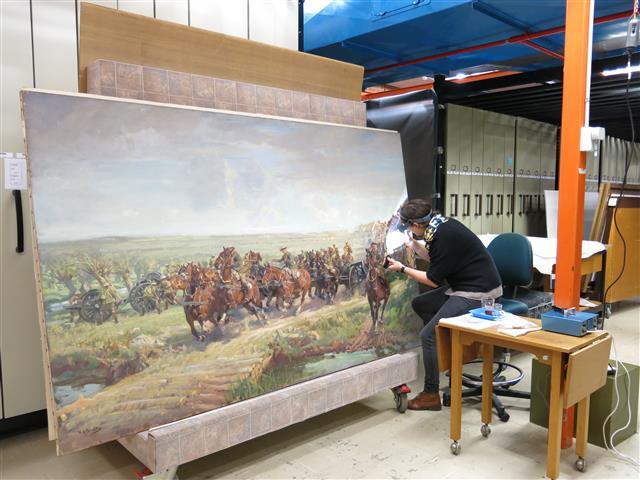Ask a Conservator
Many museums and institutions have their own conservation departments, and larger institutions often have separate departments for different material specialisations. The Australian War Memorial has a number of conservation laboratories, housed at the Treloar Conservation Centre.
On 4 November 2021 conservators around the world are answering questions about their work on Ask a Conservator Day. We asked what you wanted to know and our conservators have answered!

Soldier from the Army Medical Corps (ART94358), before (left), during (centre) and after (right) the conservation process.
What is conservation?
Conservation involves an interdisciplinary approach to the study and care of cultural property. Conservation activities include carrying out technical and scientific studies on objects, stabilizing the materials and structure of damaged objects, performing restoration work where damage to an object has made it structurally unsound or difficult to display, and establishing the environment in which artifacts are best preserved.
What do conservators at the Memorial do?
At the Memorial, conservators care for large technology, small objects, textiles, photographic, paper and art collections. There are also staff working in the fields of conservation science and preventive conservation. An analytical chemistry laboratory provides additional support for research programs, which investigate the vast range of deteriorating materials found in objects in the collections as well as new ways of conserving them.

The Art conservation team working on a painting from artist W. Longstaff.
What study/qualifications are required for your job?
Most conservators undertake tertiary study in the conservation of cultural materials. They often start out in other fields such as Art or Science (Chemistry), and then do graduate studies in a relevant conservation field.
Manual dexterity and patience are essential too.
Of all the artefacts you have, how do you decide what to put on display?
Curators, conservators, exhibition designers, project managers, historians, registration, and many others collaborate to develop the themes and stories to be included in an exhibition.
Part of this is selecting items in the collection with a story that relates to the exhibition, or is representative of a similar item that does. Artwork provides another method of interpretation to convey these stories.

Large objects conservators are currently working on the V2 and Meillerwagen at the Treloar Technology Centre.
What methods does the AWM use to protect clothing from moth damage whilst on display and long term storage?
All new items coming into the collection (new acquisitions or donations), or items moving from display back into storage, are either frozen or treated anoxically (without oxygen) to ensure they are pest free for long term storage.
As part of our Gallery Maintenance program, items on display are checked monthly for any signs of pest activity which reduces the risk of pest infestation.
What is the best way to preserve and display a small child's vest from 1941? ( brought back from my grandfather during service in Palestinian) It looks like felt . Thanks.
The vest is likely to be made from wool felt, so it is essential that the vest is checked regularly to ensure that no insect damage has occurred. If there is evidence of insect activity, the item can be frozen to kill any existing insects or eggs, but seek professional conservation advice on how to do this first. Store in an acid free box and interleave with acid free tissue to help keep the vest’s shape if needed. Minimise exposure to light to reduce the risk of fading, and avoid high temperature and high humidity environments. Fully support the vest if displaying in an upright position, and protect in a showcase if possible. Further details can be provided on how to construct a simple display form and what materials to use and which to avoid that may be harmful to the item.

Dale asked, via Facebook, how to preserve this child's vest from 1941.
How long does the process take?
How long is a piece of string? Some treatments can take less than an hour, and others months or even years! What’s important is that the treatment is done for the right reasons and does not compromise that integrity of the object.
How often do you need to maintain a display? Or do you limit how much they are handled?
The Memorial has a long standing program in place to maintain collection on display. Each month, staff spend a couple of hours in each gallery undertaking pest inspections, checking light exposure levels, looking for damage, and cleaning displays.

In preparation for changes to the Australian War Memorial’s Holocaust exhibition in February 2020, our textile conservation laboratory carefully prepared this 1940's dress for display. The dress, on loan from the daughters of Henryka Shaw (née Schermant), is believed to have been made for Henryka by fellow camp inmates in the days after the American liberation of the Mauthausen concentration camp in May 1945.
What is the hardest part of keeping the objects clean and not falling apart?
It depends on what the object is made from. Some objects we cannot prevent from deteriorating – that’s just their nature. Probably the most significant way of preventing things from deteriorating is to keep them clean of dust. Dust attracts moisture and pests which can cause things to deteriorate.
What's the best way to preserve a Bunya nut?
The best way to preserve a Bunya nut is to keep it in a cool and dry place, out of direct sunlight.
What’s the weirdest item you have worked on?
A collection of prosthetic eyes.

A conservator works on a large painting.
What's the most significant historical object you’ve come across?
We have so many objects that are significant for so many different reasons. As conservators, when tend to regard all objects in the collection as historically significant and valuable.
What do I do with items younger family members might not want to take responsibility for?
You need to have a discussion with the younger family members about your items, and find out if they do want them or not. If they don’t, then you could sell the items, or approach the AWM or other museum or historical society to find out if they would like you to bequeath the items to them.
How do you know what the items are made of?
It's a combination of personal experience, referencing the item’s provenance, and analytical techniques.
Analysis takes many forms, and is generally non-invasive, but some instances may require destructive testing. Visual analysis can include how the object feels as well as looks. Various techniques are used for chemical analysis, such as lead testing, and we have access to XRF or FTIR to provide detailed spectral analysis.